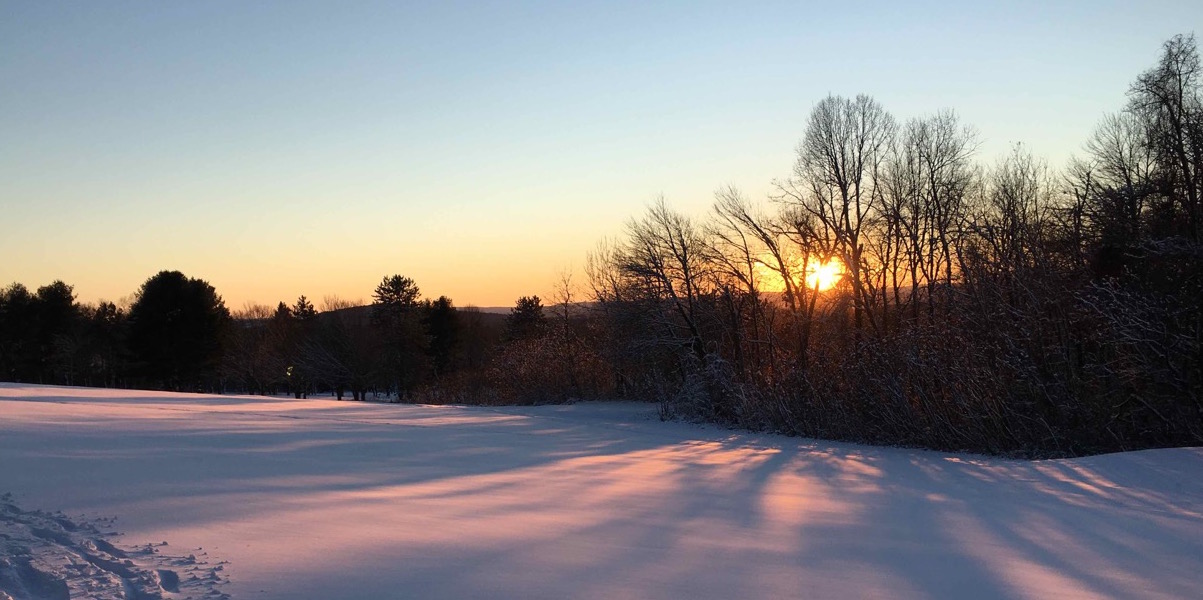
The Winter Garden
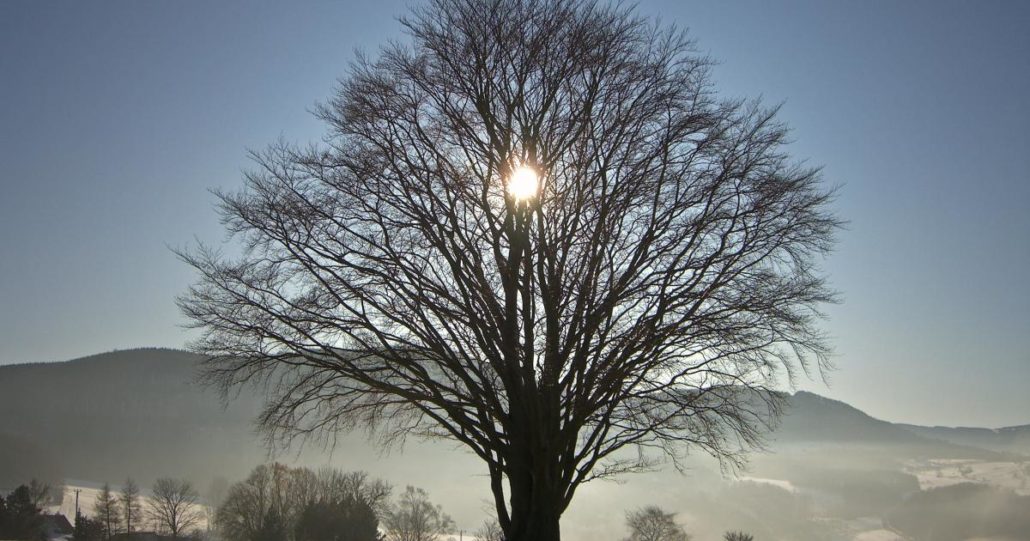
“What fascinates me about the garden in winter is that it is the true test of garden design…like a church in Lent, stripped of its furnishings, so that one falls back on the purity of the architecture, devoid of the distraction of ornament” ~ Sir Roy Strong
Are you a “fair-weather gardener”? Do you close the door on your landscape in October only to be reopened in March? Well, join the club of all the armchair gardeners who prefer the comfort of toasty slippers and cashmere throws while browsing the latest White Flower Farm catalog. A pleasure to be sure, and many informed choices for next season’s garden “germinate” during these periods of reverie. Our plants are hibernating and so are we in preparation for the tasks to be accomplished in the Spring.
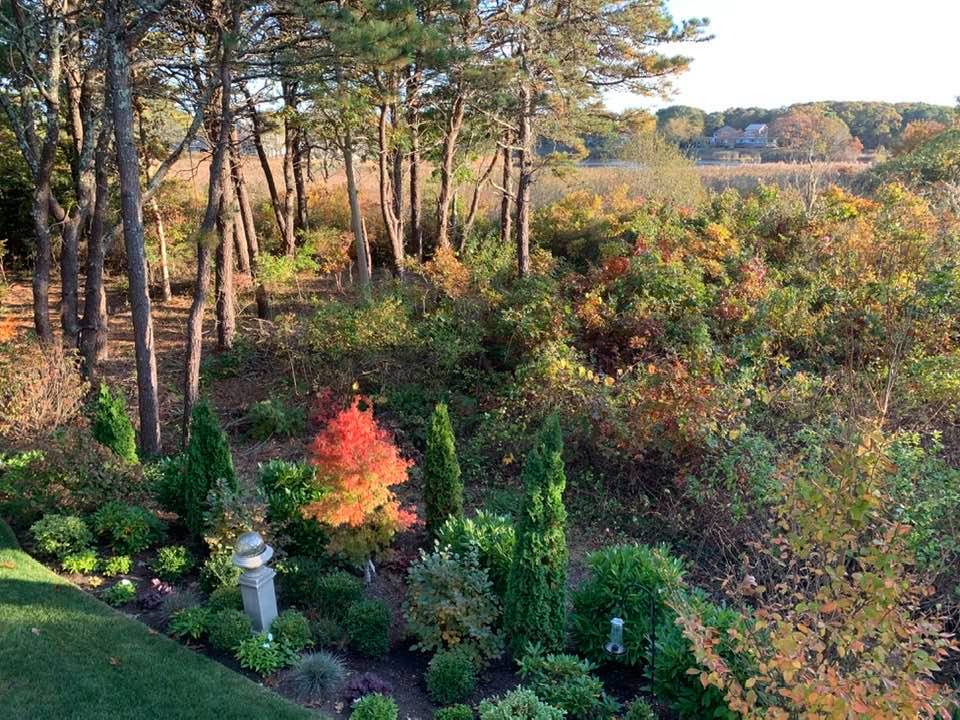
Contemplating on the quote from the eminent English plantsman Sir Roy Strong, perhaps we can use this pause in our schedules to assess the elements of our own garden design; and make plans for integrating structure, texture, and pattern into our existing landscapes. Winter’s palette is a sophisticated range of subtle tones: the somber contrasts of white, grey, and black highlighted by striking surprises of gold, red and purple. This mellow array is enhanced by the low angle of the sun as the days shorten approaching the solstice in late December. The sun will continue to climb higher in the sky as we move through January to March and with it the ever-changing play of light and shadow on the various elements in our gardens.
That being said, let us turn our focus to the season at hand. Now that the lush growth and color of Summer and Fall has faded we can turn our attention to those elements that give the landscape its inherent structure. Coining a term that is often used in garden design this is referred to as simply “good bones”. The analogy is apt as it does describe the supportive framework or ‘skeleton” of our landscapes. With the camera in hand begin your assessment by walking around and taking note of what may be missing. Photograph all aspects of your existing plan and then augment this with notes and observations gleaned from books, visits to local nurseries, and neighbor’s gardens you admire. Carefully evaluate foundation plantings, curves of driveway and entry walks, views from windows, and the presence or lack of supporting evergreens and sculptural trees.

Man-made architectural structures and ornamentation give year-round interest. A well-placed arbor, lattice panel, birdbath or large urn used artistically as focal points give a definition, define distance, and are a welcome addition to the winter garden. An important aspect of the structural integrity of our landscape that is so pronounced this time of year is the lineal demarcation of the ground plane. The voluptuous curves of planting beds walks, driveways and islands of lawn wrap our homes and soften the horizontals of architecture. They also can serve to define our “garden rooms” and create flow leading us on journeys and destinations to spaces within the greater whole. Nothing can define a space more obviously than hedges and walls. A native stone wall, whether used to retain a slope or as a freestanding feature, is a beautiful addition to the landscape and is an investment that will last a lifetime and beyond.
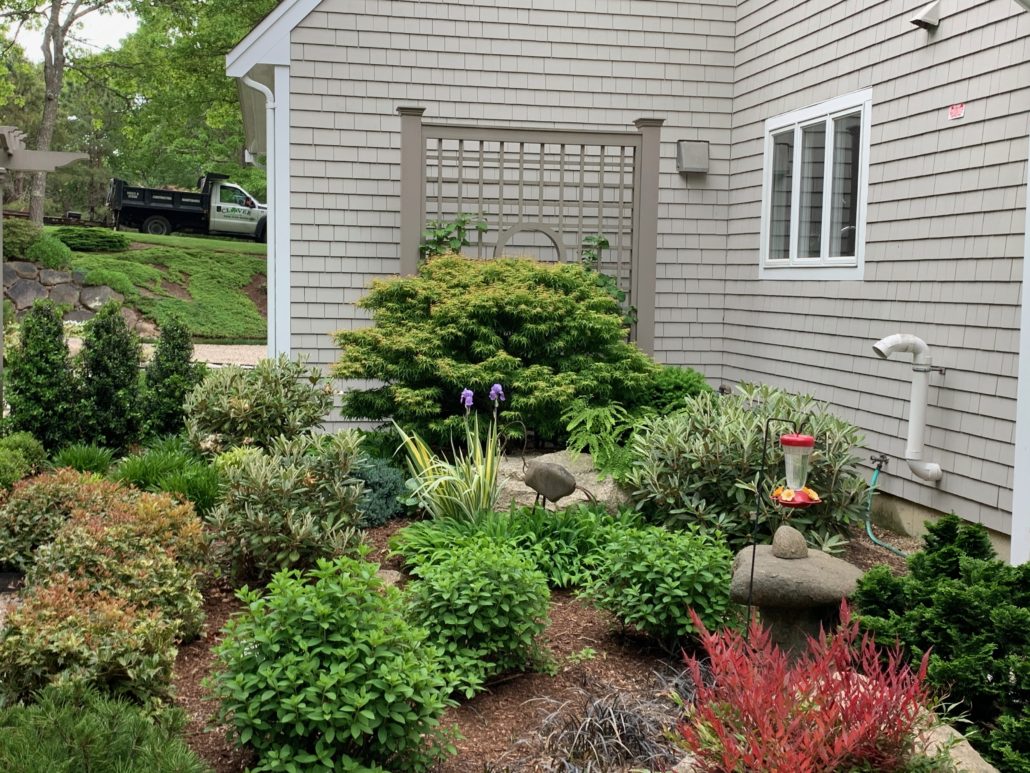
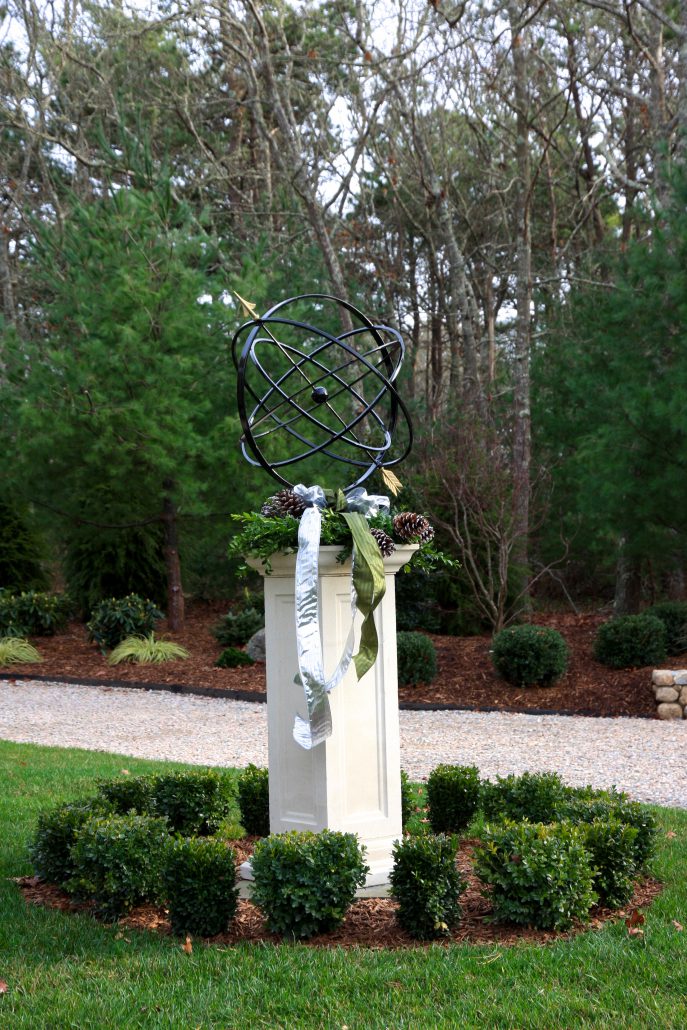
Plants, particularly evergreens, will now dominate the background, command the middle distance and provide focal points in our landscapes. The interesting silhouettes of deciduous trees are sculptures in of themselves. Notice the shadows they cast on new-fallen snow or how their branches glisten with frost in the early morning. This is the display of Mother Nature’s architecture and your choices will be guided by the size of your overall property. The plants listed below are selected for their suitability in most of our suburban landscapes. If you are fortunate enough to have a very large property the list could include European beech (Fagus sylvatica), umbrella pine (Sciadopitys verticilatta), dawn redwood (Metasequoia glyptostroboides), katsura (Cercidiphyllum japonicum), English oak (Quercus robur), or little leaf linden (Tilia cordata) et. al. Careful research on cultural requirements and growth habit is paramount in making the correct choices for your particular growing zone. Books, magazines, and the internet provide all the information one would need.
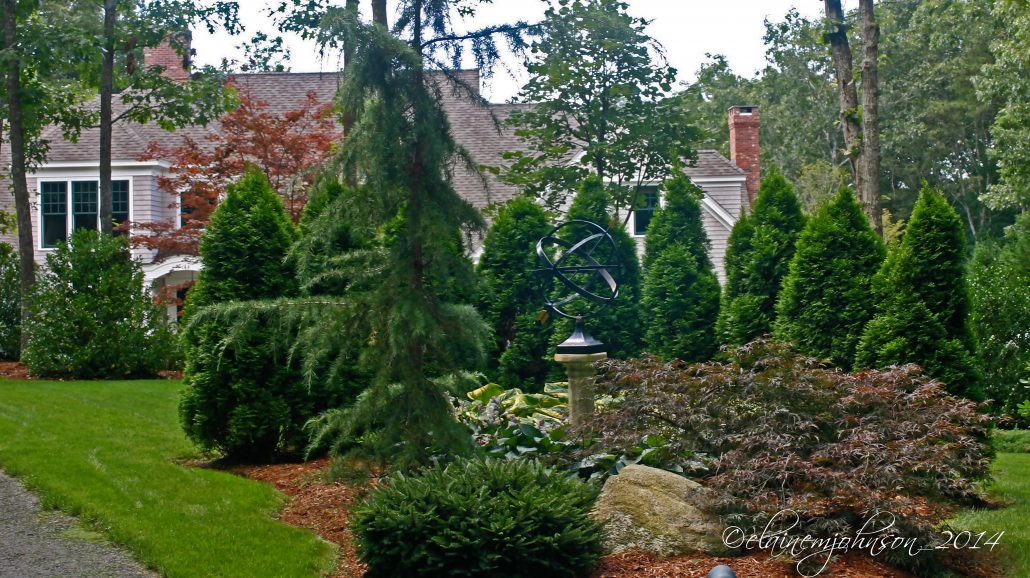
As you consider what additions to make to your existing design look for trees and shrubs that have sculptural branching habit, interesting bark, berrying and contrasting foliage, texture and color. Evergreens, whether coniferous or broad-leafed, come in all shades of green, gold, silver, and blue as well as beautiful variegation. Even very small gardens can benefit from the addition of dwarf boxwood, Skimmia, compact rhododendron, dwarf conifers, gold or white variegated Euonymous or a specimen topiary Alberta spruce.
Even in the depths of winter we can be surprised by the dazzle of berry-laden deciduous shrubs, the persistent foliage of ornamental grasses and the remaining seed heads of many perennials. A visit to the florist will still remain our source for a colorful bouquet in January and February but what a delight to discover the miracle of hellebores, early primrose, and heaths during these lengthening days. Many of us can’t wait to get outside with our pruners and gather stems of witch hazel, pussy willow, quince, and forsythia to force indoors as a prelude to the arrival of Spring. Those of us who reside in colder climes have learned to find many treasures waiting for us even in the grips of a harsh winter. Your pleasure will be dramatically enhanced by incorporating some of the ideas presented here. If you rarely venture outdoors the view from a favorite window can brighten your day with the color rescued from a Summer long past.
The beauty of this scene on a bright, crisp day after a heavy snow fall is testimony to the importance of structure and framework in the landscape. Here we see supporting architectural pieces, containers with seasonal interest, and the weeping form of an evergreen shrub. Notice the intricate pattern of silhouette and shadow on the entire scene.
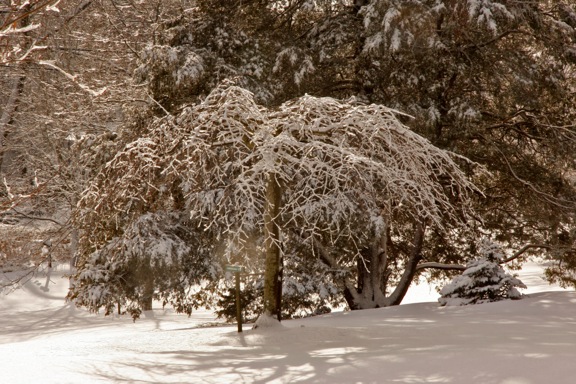
“Nature has undoubtedly mastered the art of winter gardening and even the most experienced gardener can learn from the unrestrained beauty around them.” ~Vincent Simone.
